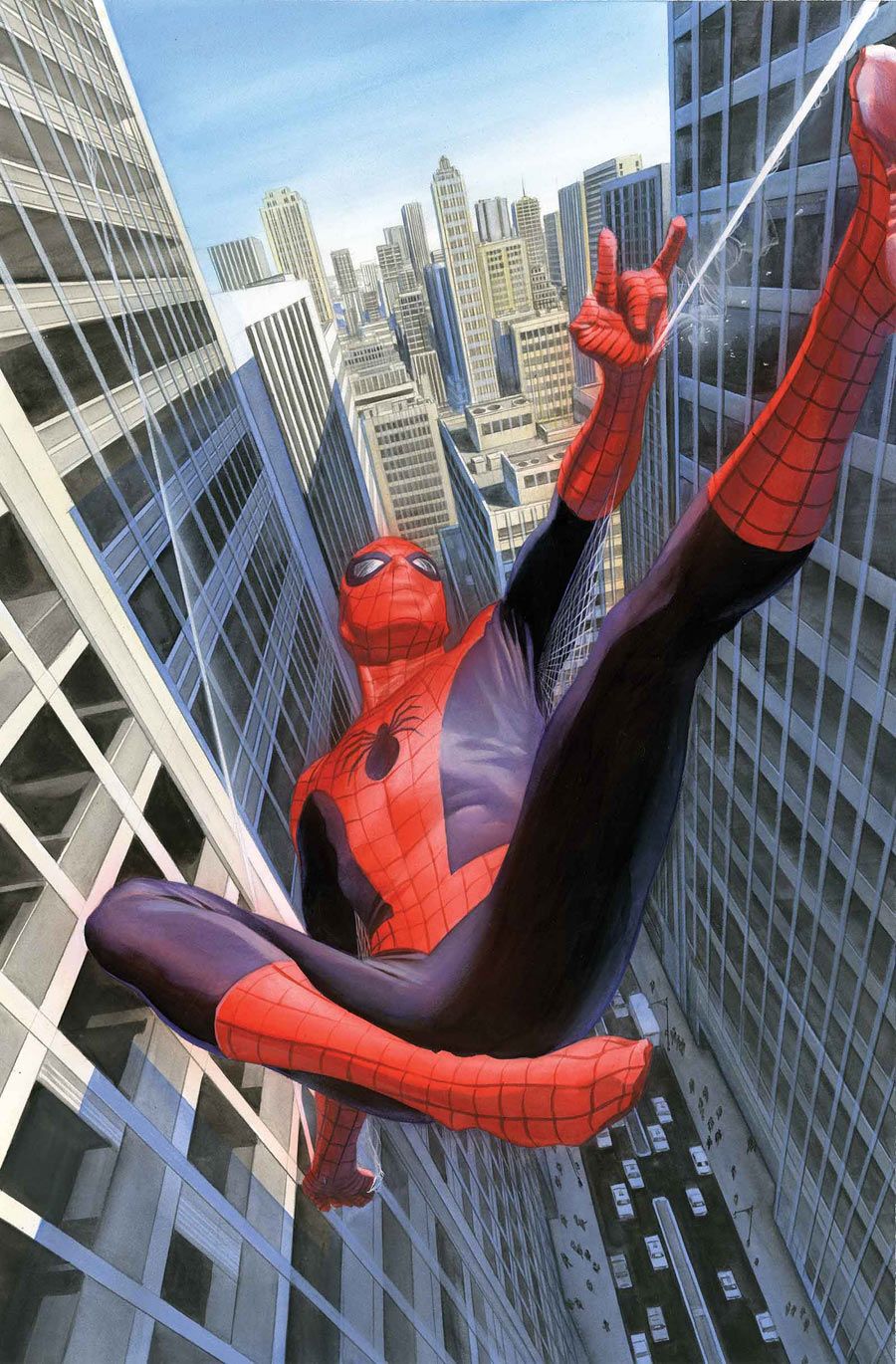Peter Parker is back and it's another brand new day of sorts, so writer Dan Slott takes this opportunity to expand on his early wall-crawling days in "Amazing Spider-Man" #1.1, the first chapter of the "Learning to Crawl" arc that examines a grieving and guilt-ridden Peter during the days immediately following the murder of his Uncle Ben. It's solely an expansion, not a modernization, and Slott along with artist Ramón Perez deliberately adhere to the same simple and everyday feel that Stan Lee and Steve Ditko first brought to the character over a half century ago.
Slott and Perez put the emphasis more on the friendly neighborhood side of Spider-Man than on the amazing, and that's just fine. Peter has yet to face his first super-villain, and is at the point in his dawning career where he's still cashing in on his newfound powers. Slott ensures that the lesson about great power and responsibility isn't lost on Peter, though, as the money he earns isn't for his own benefit as much as it is for his financially struggling Aunt May. The story's modest setting plays into the old school feel; rather than swinging through the skyscrapers of Manhattan, Peter's travels take him no further than Midtown high and the local TV studio where he earns his income showing off his powers in front of a live audience.
The issue doesn't blow the pants off readers with any kind of thrills or excitement, but that's not the intent, and it's actually a welcome switch that allows readers to get reacquainted with Peter again. Alongside this deeper look at Peter's humble beginnings, Slott also continues the parallel story of a fellow teen that he began in one of the backup features contained in the recent "Amazing Spider-Man" #1. Clayton Cole doesn't know Peter, but he has a lot in common with him beyond an alliterative name. Cole also is enamored with Spider-Man's skills, both his physical ones as well as his mental ones that enabled him to design his own webshooters.
This subplot generates interest because Cole only sees the bravado and showmanship when Spider-Man leaps around the stage, and not the altruistic motives behind them, and therefore becomes motivated to emulate Spider-Man for the wrong reasons. This is what truly justifies this story arc's purpose, making it something more than a director's cut of Spider-Man's origin.
Perez brings a kind of Francisco Francavilla-like stylish simplicity to the art, evoking Ditko just often enough to remind readers of Spider-Man's unassuming early days. While the story is set in the modern day, complete with the internet and smartphones, Perez holds onto the characters' classic looks. Peter still wears the clunky round glasses that compliment his vest and skinny ties, and Aunt May looks every bit the 110-year-old granny in the frumpy dress, just as she did in 1963. It's a blend that works so well it practically goes unnoticed, one that Perez carefully mixes to give this story a classic look but not a dated one. Her plastic smile makes her look like she's had one too many botched facelifts, but all of the Ditko-esque Spider-Man poses more than make up for such a small shortcoming.
Does the world really need yet another look into Spider-Man's origin? Probably not, but "Amazing Spider-Man" #1.1 makes a good case for it anyway. Slott finds worthy new elements to explore, and Perez brings a kind of retro-cool to the old school. Spidey fans might not need this, but they will certainly want it.

